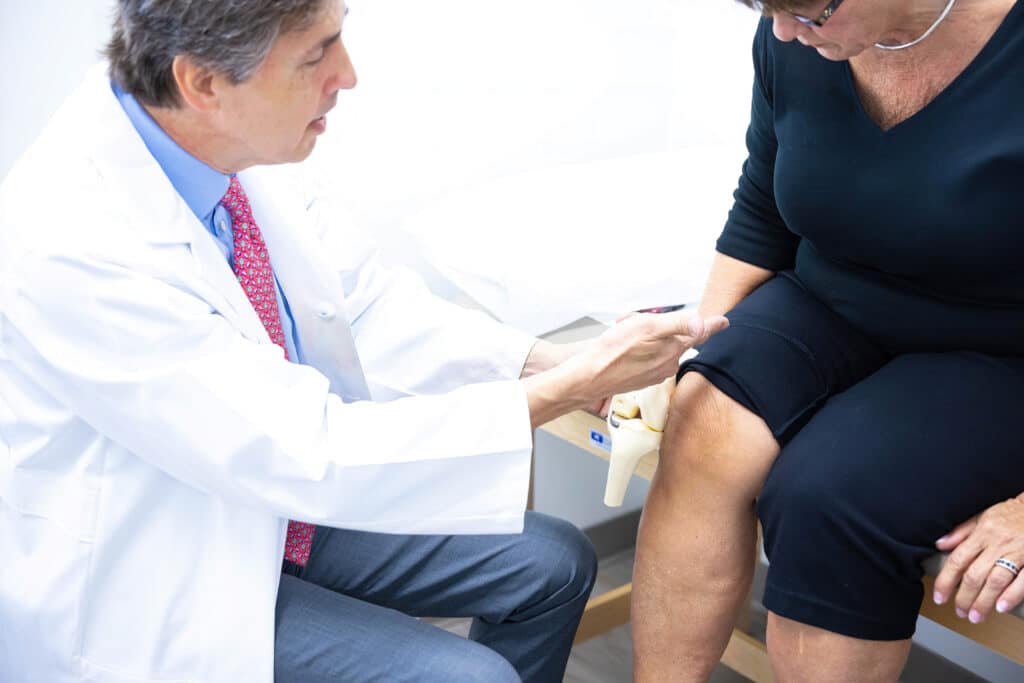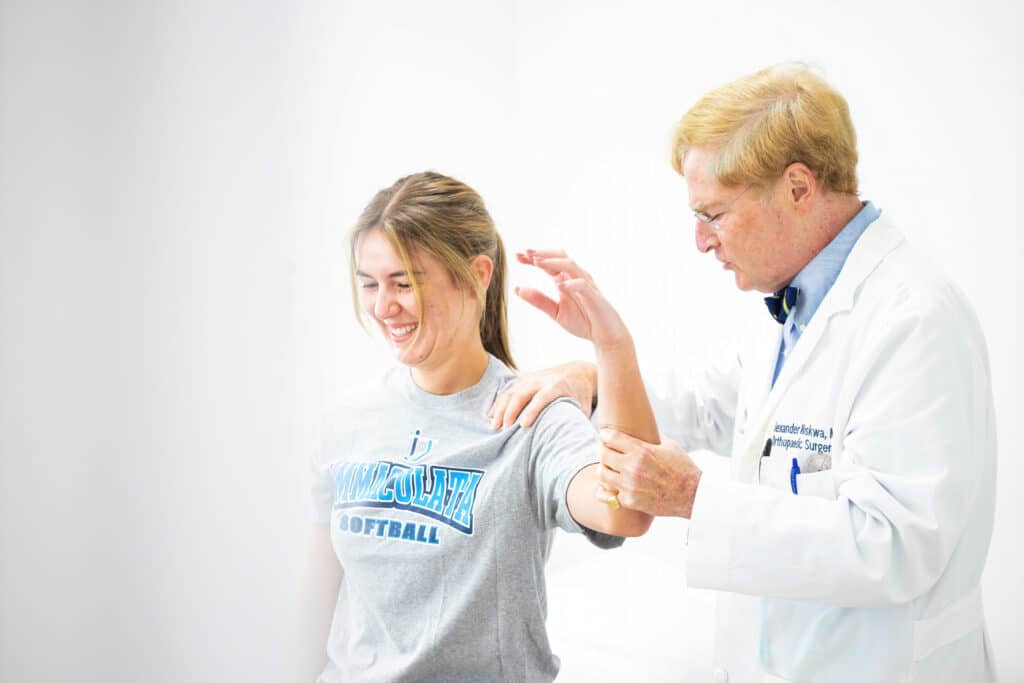
Physician Assistants
Physical & Occupational Therapists
KneeMRI ScansNon-OperativePhysiatry
Physical Therapy
Podiatry
Spine
Sports Medicine
TraumaUrgent Care
X-Ray Imaging

Inside your knee, a piece of cartilage sits at the base of your femur (thigh bone) and another at the top of your tibia (shin bone). These two pieces make up the meniscus. When this cartilage gets torn, it can cause swelling, pain, and loss of motion.
Meniscus tears frequently occur in those active in sports and in elderly people whose meniscus has worn down over time and become more susceptible to tears. While some partial tears can heal on their own, others may require surgery.
A meniscus tear usually occurs with a sudden twist of the knee, mainly when the foot is solidly planted. Patients with a torn meniscus will feel that their knee is unstable and may buckle or lock up. It will also swell and cause pain.
Small tears may repair independently with treatment using the RICE method: rest, ice, compression, and elevation. NSAIDs, pain medication, and physical therapy can help with pain and improve range of motion. In more severe cases, corticosteroid injections may be used.
If those do not work, or if the tear is more severe, surgery is necessary for a full recovery.



Meniscus surgery is often performed through knee arthroscopy, a minimally invasive surgery that includes small incisions made for the camera and the surgical instruments. The surgery usually can be done in about an hour, and patients can go home afterward.
The patient may undergo tests beforehand to ensure they can receive anesthesia. During the surgery, anesthesia is administered, and the leg is secured in place. The surgeon uses the camera to examine the joint and determine the amount and type of damage.
The surgeon will then do one of two things. They will either repair the meniscus by sewing the torn pieces back together, or they will remove the torn pieces and leave the healthy meniscus. The vast majority of surgeries involve removing the torn pieces. The surgeon will then close the incisions and bandage the knee.
Recovery times after meniscus surgery can vary depending on the severity of the injury and the age and health of the patient. In general, recovery can range from 1.5-3 months.
Patients will begin by using crutches to take stress and weight off the knee. A knee brace is also necessary to keep the knee stable as it heals. NSAIDs (such as Tylenol or Aleve) may be used for pain.
After an initial healing period, patients will begin physical therapy to restore the knee's flexibility, strength, and range of motion. You can use the RICE method at home to reduce swelling. Over time, rehabilitation exercises will become more intense as the knee gains strength and mobility.
Most patients report a full recovery after meniscus surgery. There is a slight chance of developing arthritis in the knee later if the cartilage is removed because there is less tissue to absorb shock. Moving from high-impact to lower-impact activities can help prolong the life of the joint.

© 2023 Princeton Orthopaedic Associates. The contents of princetonorthopaedic.com are licensed under a Creative Commons Attribution-NonCommercial 4.0 International License. Copying without permission is strictly forbidden.